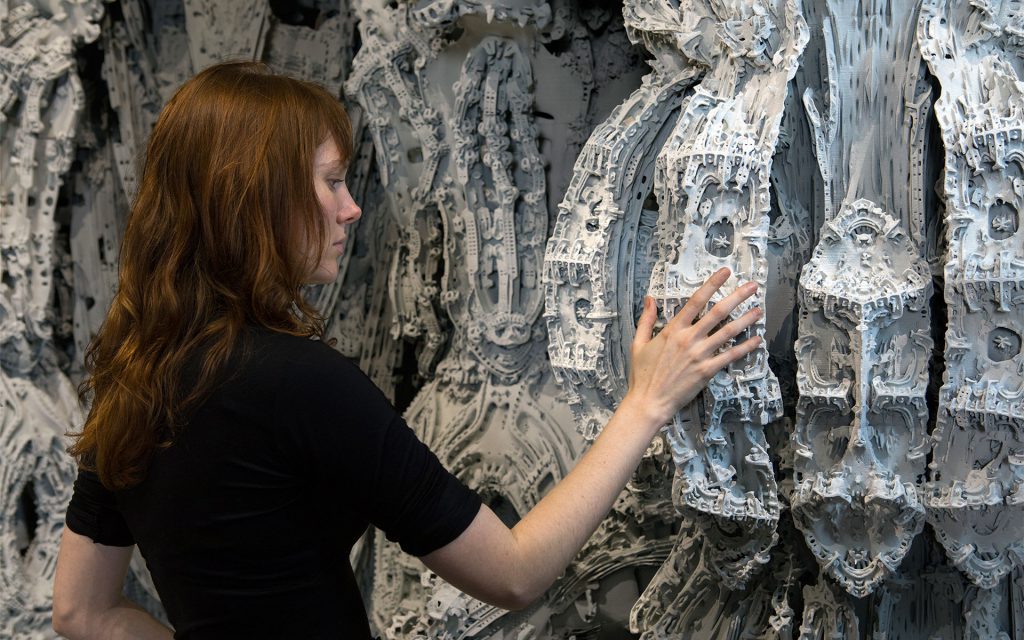Michael Hansemeyer's Digital Grotesque II is an eleven and a half foot tall, 3D printed sandstone structure which was modeled using generative architectural algorithms. In topology, a cube and a sphere are considered the same object, however a torus (donut) is not. The algorithm that designed this piece can start out with a topological sphere, and continue to add holes and loops indefinitely, so as to create any shape. The algorithm was incentivised to create stimulating structures through crowd sourced feedback in several cycles, each more fine-tuned than the last.
I like this method because it puts most of the hard work in the beginning -designing the algorithm- and then allows the artist to become curator. Thus the sensibilities of the artist are very directly present in the artwork, because the artist serves as the reward function. And in this case, there were hundreds of people giving feedback to the computer, which even further complicates the notion of authorship for generative artwork. I would say that the effective complexity of the piece is a little past the complexity of fractals, because it shares a fractal aesthetic, but the rules of its creation are far more complex.
http://www.michael-hansmeyer.com/digital-grotesque-II
